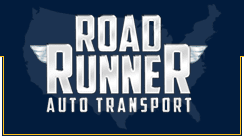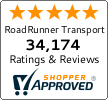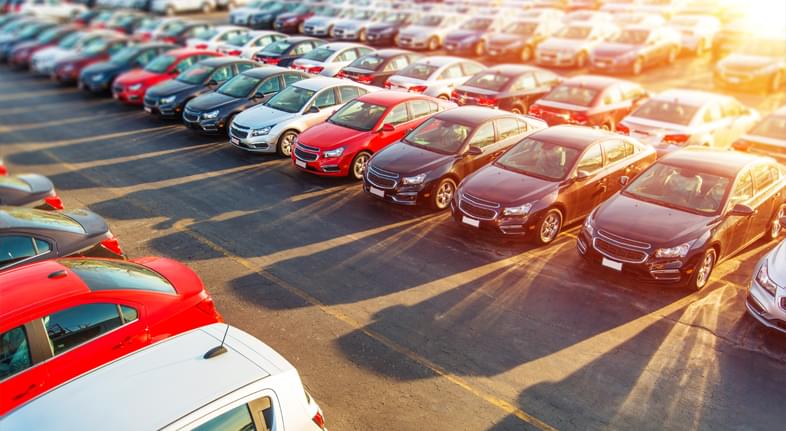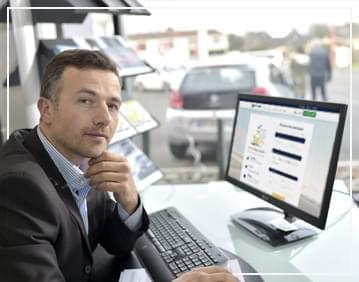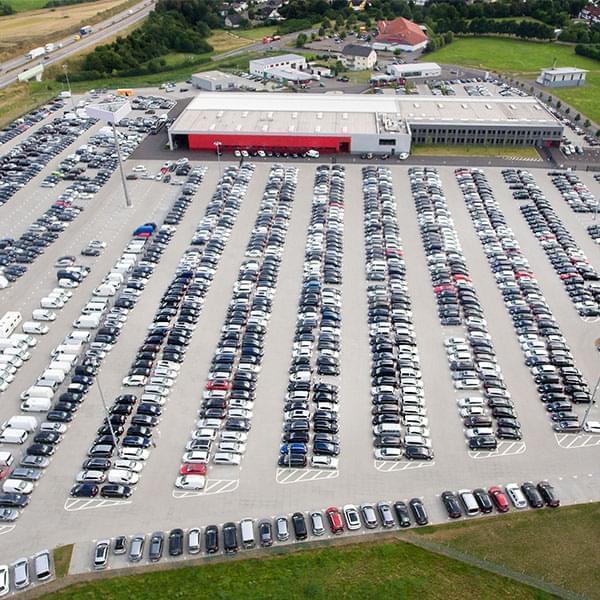Understanding Dealership Car Shipping
Transporting cars for dealerships refers to moving new, used, or traded-in vehicles between dealership locations or facilities like auctions, distribution centers, or auto manufacturers. This facilitates vital inventory management, reduces local overstock situations, and supplies dealers with the specific makes and models that customers want to purchase.
Dealerships may need to relocate vehicles for many reasons:
- Transporting new cars from distribution hubs, ports, or factories to retail sales locations
- Shuffling used and certified pre-owned vehicles between dealership locations to balance local inventory and meet market demand
- Moving trade-in vehicles to centralized reconditioning facilities, auctions, or wholesale partners
Most car dealership groups manage transportation logistics in-house, particularly for routine inventory shuffling. Others enlist specialized car transport businesses, rental car haulers, or third-party logistics firms to handle large-scale relocations or one-time events.
The frequency of transport needs ranges widely — from weekly load shuffling to fill gaps and improve CPO selection to one-time store openings, closures, or inventory rebalancing projects.
Careful coordination ensures vehicles arrive safely, on time, and ready to be bought — protecting profitability. Understanding the logistics of shipping cars helps dealers better manage margins and sales velocity.
Buy Your Next Car Online
Buying a car online and having it delivered is the new norm. This process offers several advantages:
- Skip the dealership and avoid negotiation hassles
- Simply click to buy, saving time and providing convenience
- Streamline the process with options like AutoNation Express Buying
- Start the financing process online
When looking for the right vehicle online, reputable sites often offer comprehensive vehicle protection plans. This ensures your investment is safeguarded. Additionally, transparency regarding fees such as the dealer document fee, electronic filing fee, and dealer services fee is provided upfront. This clarity helps in making an informed decision.
Finding The Right Vehicle
Finding the right vehicle online is easier than you might expect. Start by determining your car's needs, such as size, performance, and fuel efficiency. Use the site's filters to narrow your search based on your preferences. Once you find a potential vehicle, thoroughly examine its details, including high-resolution images, the vehicle's history report, and the frequently asked questions section for additional insights.
Some platforms allow you to inquire about service financing, vehicle protection plans, and privacy policies. You may even have the option to schedule a service appointment or consult a mobile mechanic for a pre-purchase inspection, providing added peace of mind before finalizing your purchase. With these steps completed, you're ready to explore how online car delivery works and make your purchase.
Streamlined Online Car Buying and Delivery
You might wonder how the delivery process works once you decide to buy a car online and have it delivered through RoadRunner's auto transport services. Typically, after you complete the online purchase, including the financing and any protection plans, the vehicle is prepared for delivery.
Purchasing Process
The process is straightforward after finding your ideal vehicle online and deciding to make the purchase. Complete the online transaction, including financing and selecting any desired protection plans. The respected automotive retailer handles the sales tax, applicable dealer fees, and registration details before delivery.
Convenient Delivery
Once the purchase and financial documentation are finalized, the dealer coordinates a delivery time that suits your schedule. Most retailers offer the convenience of home delivery, bringing the vehicle directly to you. Some services, such as AutoNation Express Buying, may even provide a return period, ensuring your satisfaction with the online purchase.
Arrival and Inspection
The delivery team, equipped with the necessary paperwork and well-versed in the privacy policy, will bring the vehicle to your preferred location. Upon arrival, they will review the vehicle's condition with you, confirming that it meets your expectations and matches the details provided online. The car is fully insured and handled with care throughout the transportation process.
Final Steps
During the delivery, you will complete any remaining paperwork, including confirming the terms of the vehicle protection plans, discussing the service appointment process, and reviewing the return period, if applicable. The delivery team will also remind you of the dealer document fee, sales tax, and any other charges included in your purchase. Once these steps are completed, you can enjoy your new vehicle with the peace of mind from a seamless online buying and delivery experience.
Benefits of Buying a Car Online
Buying a car online offers a range of advantages that make the process more convenient, transparent, and satisfying. Consider the following benefits:
- Convenience: Shop from anywhere, any time. There's no need to visit multiple dealerships or spend your weekends haggling with salespeople.
- Clear Pricing: Online listings often include all the costs, such as the dealer document fee, electronic filing fee, and sales tax. This transparency allows for easy budgeting and avoids surprises.
- Wide Selection: Browse a vast inventory that a physical sales center cannot match. Filters help you find exactly what you're looking for.
- Home Delivery: Having your vehicle delivered to your doorstep is exceptionally convenient. It's a hassle-free end to the car-buying process.
- Return Policies: Many online retailers offer a return period, providing peace of mind and satisfaction with your purchase.
The online car buying and delivery process revolutionizes the traditional car buying experience, offering modern buyers convenience, transparency, and peace of mind. With trusted retailers and comprehensive vehicle protection plans, it's an attractive option for today's buyers.
Costs of Dealership Car Transport
Transporting automobiles is one of the largest variable costs in operating multi-location dealership groups. Carefully evaluating and budgeting for relocation expenses is key to preserving profit margins across a dealer network. Key factors determining auto transport prices include:
Distance
Long-haul, cross-country relocations cost exponentially more than local in-town shuffling. Industry averages range from $1-3 per mile for each vehicle transported, with 500-mile moves often starting around $800 per car.
Distance
Long-haul, cross-country relocations cost exponentially more than local in-town shuffling. Industry averages range from $1-3 per mile for each vehicle transported, with 500-mile moves often starting around $800 per car.
Number of Vehicles
Full truckloads with 8+ units achieve maximum economy of scale, with per-vehicle costs ranging from $800-1500. Shipping only a portion of a truckload means much higher per-car freight bills.
Timing
Vehicle transport rates fluctuate seasonally and are also driven up by weather delays, rush orders, or repositioning for one-way drop-offs only. This complexity requires flexibility in budgeting.
Insurance
Bumper-to-bumper policies that fully protect vehicle value are non-negotiable requirements for dealers. Typical premiums range 1-1.5% of asset value for the cars shipped.
Fuel, Tolls and Fees
These routine but variable operating costs inevitably get passed through to dealers in final transport bills. Expect ancillary fees to add 10-20% on top of base hauling rates, depending on route.
The Different Methods of Transporting Cars for Dealerships
Car dealerships primarily rely on three main methods to relocate vehicles between locations:
Truckload Shipping
This leverages specialized auto hauler trailers to move multiple vehicles on open or enclosed car shipping carriers. Open trailers can fit around 10 cars, while enclosed versions hold 6-7 for higher security. Ideal for frequent, high-volume inter-dealer transfers and efficient new inventory deliveries from distribution hubs.
Towaways
Single vehicles get transported via a tow hitch or flatbed pickup truck. Drivers can directly move cars to final destinations without consolidation, best for on-demand relocations and one-off trades.
Rail Shipping
Large trains equipped with multilevel auto racks transport new vehicles for long distance moves. Models at factories get driven directly onto specialized rail cars for mass movement. The most cost-efficient option for high volume but has limited flexibility.
How to Transport Cars for Dealerships
Arranging smooth car dealer shipping involves:
Picking Vehicle Transport Partners
Get quotes from multiple approved auto shipping services or brokers with experience and expertise in transporting cars. Ask about routes, capacity, vehicle type expertise, and timetables.
Prepping Vehicles
Used cars may need mechanical certification or cosmetic reconditioning beforehand. Check fluid levels, tire pressure, brakes, and batteries.
Scheduling Logistics
Confirm timelines, pickup/dropoff specifics, vehicle condition reports, and staff coordination at both ends. Build loading/unloading time buffers into the schedule.
Securing Cars
Disable alarms, unlock doors, and leave a spare set of keys if transporting trades, rentals, or sensitive models. Engage antitheft devices.
Inspecting Units
Do walkaround checks for any damage before loading and unloading. Document via photos and condition reports signed by drivers and staff.
Following Up
Verify all dealership vehicles arrived safely at the final destination. Get copies of routing forms and submit them with invoices to streamline payments.
By understanding dealership vehicle transport processes, costs and contractors, finance managers can effectively oversee inventory moves between markets and stores. Careful planning and protection keep cars moving to where buyers want them.
